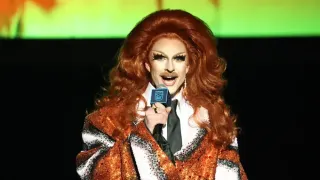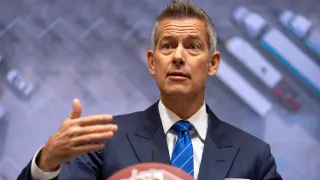November 12, 2017
No Word Of Sex Scandal at First Oscar Celebration of Season
Sandy Cohen READ TIME: 3 MIN.
Filmmaker Agnes Varda danced with Angelina Jolie. Donald Sutherland wanted to thank the characters he's played. Writer-director Charles Burnett said getting an Oscar eases the sting of a teacher's heartless words decades ago. Alejandro Gonzalez Inarritu dedicated his award to immigrants worldwide. And cinematographer Owen Roizman was moved to tears at the film academy's ninth annual Governors Awards.
Hollywood took a break Saturday from its growing sexual harassment crisis to present the first Oscars of the forthcoming awards season to four film-industry veterans and a virtual-reality project.
Campaigning for moviemaking's biggest prize has already begun, as evidenced by the starry turnout of Oscar hopefuls at the private, untelevised Governors Awards. Saoirse Ronan and Greta Gerwig of "Lady Bird," Sally Hawkins, Richard Jenkins and Guillermo del Toro of "The Shape of Water" and Kumail Nanjiani and Zoe Kazan of "The Big Sick" were among the guests - all considered front-runners for Oscar nods.
Not one of the night's presenters or honorees mentioned the sex-abuse scandal that's been spreading through the industry since harassment and assault allegations surfaced last month against movie mogul Harvey Weinstein. Several high-profile men, including Kevin Spacey and Louis C.K., have since been
accused of repeated misconduct.
With sexual harassment off to the side, the Governors Awards was a night of classic Hollywood schmoozing and celebration. One of the most exclusive parties of the year, the guest list also included Tom Hanks, Salma Hayek, Jake Gyllenhaal, James Franco, Sarah Paulson, Emma Stone, Robert Pattinson, Gary Oldman, Ben Stiller, Sofia Coppola, Patty Jenkins and Sam Rockwell.
Roizman, who was nominated for five Academy Awards during his career, received his honorary Oscar from Dustin Hoffman (who apologized earlier this month for allegedly sexually harassing an intern in 1985). Hoffman praised the cinematographer for his integrity on and off screen, and Roizman's eyes were misty as he accepted his award.
Varda was introduced by four talented women, including Jolie and actress Jessica Chastain.
"Are there no men in this room who love me?" the 89-year-old filmmaker said.
Like an imp with two-toned hair, the French New Wave pioneer joyfully twirled her scarf and danced onstage after accepting her Oscar. Jolie described her as "unique, daring and exceptional." Gerwig called Varda "one of my heroes."
Filmmakers Reginald Hudlin and Ava DuVernay and actors Chadwick Boseman and Tessa Thompson said they were moved by Burnett's work because he made their lives visible. He's spent his career telling stories about the African-American experience.
It was while studying at UCLA that he considered using film as a means for social change, he said. But the honorary Oscar is validating beyond film.
He remembered how a teacher in junior high once told him he'd amount to nothing.
"I don't know if he's still around," Burnett said. "But if he is, I hope he reads the trades."
Whoopi Goldberg and Jennifer Lawrence both called Sutherland "magic" as they presented the actor his honorary Oscar.
"I wish I could say thank you to all the characters I've played," he said.
Inarritu received a special Oscar for the virtual reality project he developed with cinematographer Emmanuel Lubezki. "Carne y Arena" ("Flesh and Sand") simulates experiences of immigrants crossing the deserts of the American west. The installation is on view at the Los Angeles County Museum of Art.






